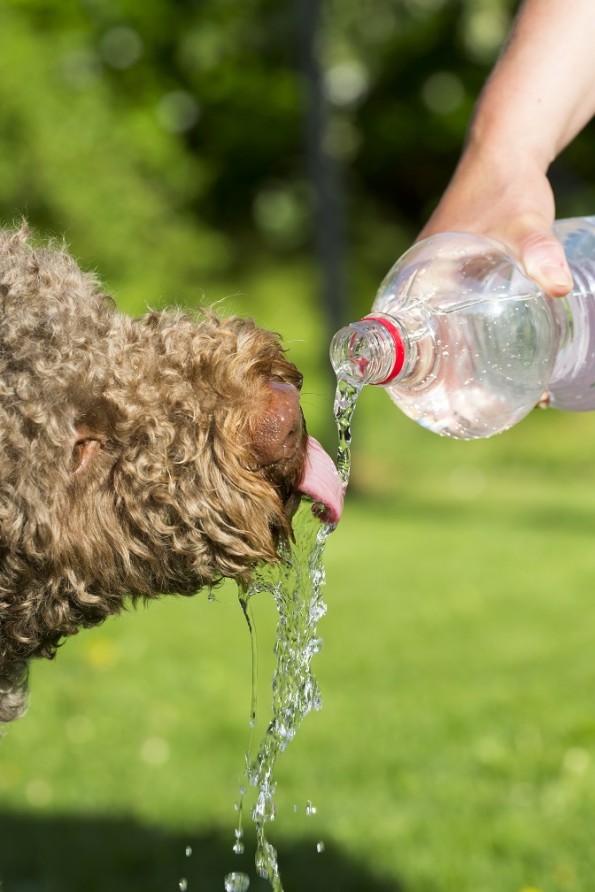
Heat stroke is a form of non-fever hyperthermia which occurs when temperature-regulating mechanisms of the dog’s body cannot accommodate excessive external heat, usually as a result of prolonged heat exposure or physical exertion in high temperatures. Heat stroke in dogs is associated with temperatures of 106°F (41°C) or higher which can lead to multiple organ dysfunction.
Dogs don’t sweat out excess body heat like humans do, they have a few sweat glands located on the pads of their feet, but it does little to help regulate their body temperature. Dogs regulate their body temperature through panting, but sometimes panting is not enough to keep them from overheating, especially in extreme weather conditions.
Heat exhaustion occurs when the body temperature is elevated above normal temperatures. Normal temperature in dogs can vary slightly, but is generally agreed that a temperature of 103°F (39°C) or higher are above normal. Body temperatures that rise above 106°F are in the danger zone for heat stroke which can cause seizures, coma, and cardiac arrest. As exposure to heat progresses the organs will begin to shut down, and the heart could stop altogether if the body is not cooled down.
Brachycephalic breeds (such as pugs, shih-tzus, bulldogs) are especially sensitive to hot weather. Extremely active breeds, working and hunting dogs are at a higher risk during warmer months of heat exhaustion.
Prevention:
- Always have access to fresh water and allow access to shade when outside.
- Never leave pets in a parked car for any amount of time, even if the windows are cracked open. Temperatures inside a car can rise to dangerous temperatures of 140°F in just a few minutes.
- Pets with pre-disposing conditions such as heart disease, obesity, older age or breathing problems should be kept cool and in the shade when outside.
- On hot and humid days, restrict the activity in the afternoon when temperatures are at the highest, instead take dogs for walks in the early morning or evening when the temperature is cooler.
- Wetting dogs down periodically with cool water or allowing him to swim can help to maintain a normal body temperature.
Signs:
Red or pale gums Depression Vomiting (sometimes with blood)
Increased heart rate Increased salivation Dizziness
Excessive/rapid panting Bright red tongue Diarrhea
Weakness Thick, sticky saliva
What to Do:
- Remove from heat and increase air circulation with a fan, if possible.
- Transport your dog to a veterinarian immediately
- Lower the body temperature by placing cool, wet towels over the back of the dog’s neck, under forelimbs and between hind legs. Do not use iced water or ice to bring the body temperature down. The body’s response to ice or iced water can prevent heat loss.
- Cooling too quickly and allowing the body temperature to become too low can cause life-threatening medical conditions.
- Check temperature every 5-10 minutes.
- Once the temperature reaches 103F, cooling should be stopped and the dog should be dried thoroughly and covered to prevent more heat loss.
- Take your dog to a veterinarian even if he seems to be recovering to get him examined for dehydration and any other complications, especially after prolonged heat exposure and if the initial temperature was above 105F.
- Allow free access to fresh water, but do not force-feed water.
Having your local veterinary emergency clinic phone number and address on hand can save crucial time in case of an emergency.
Have a safe and happy summer!




